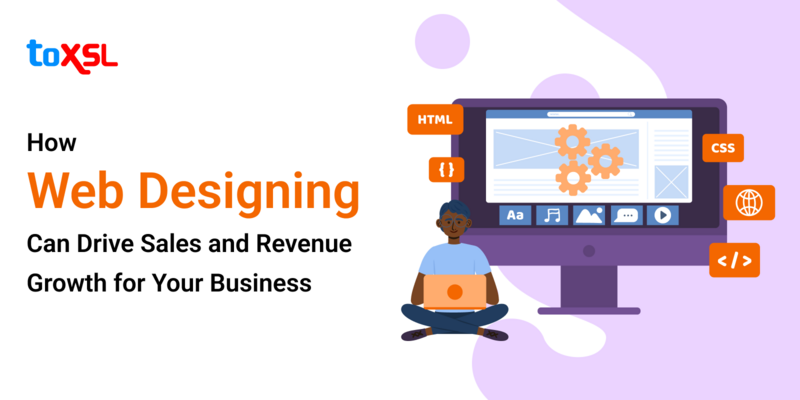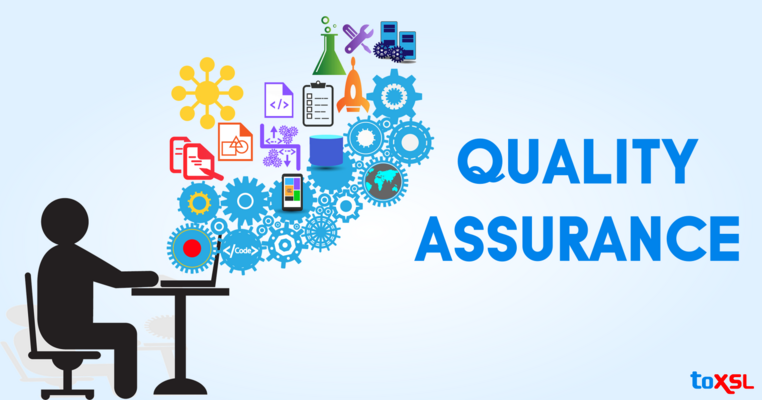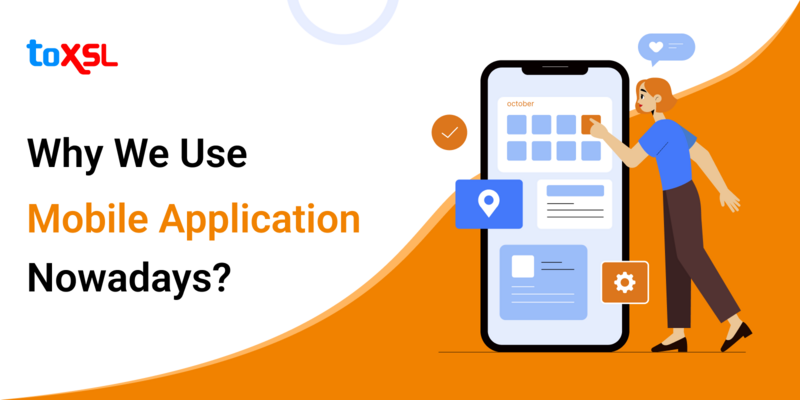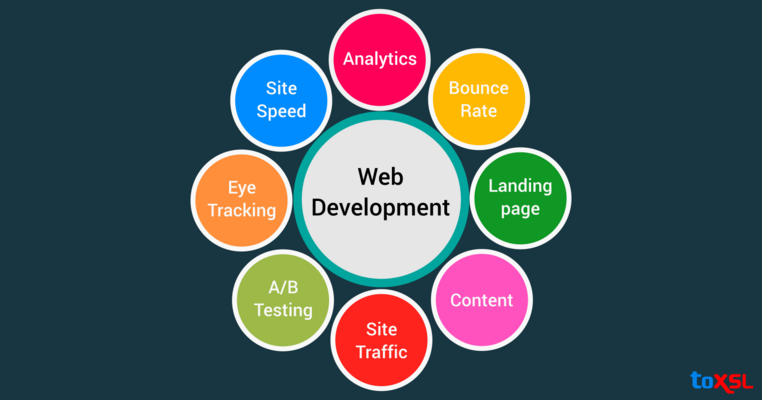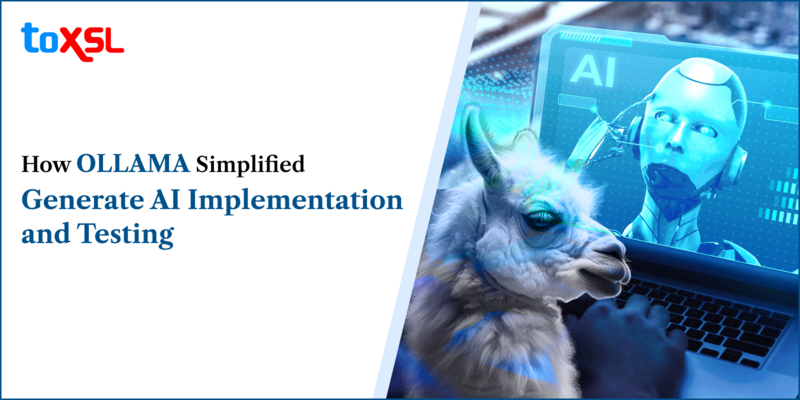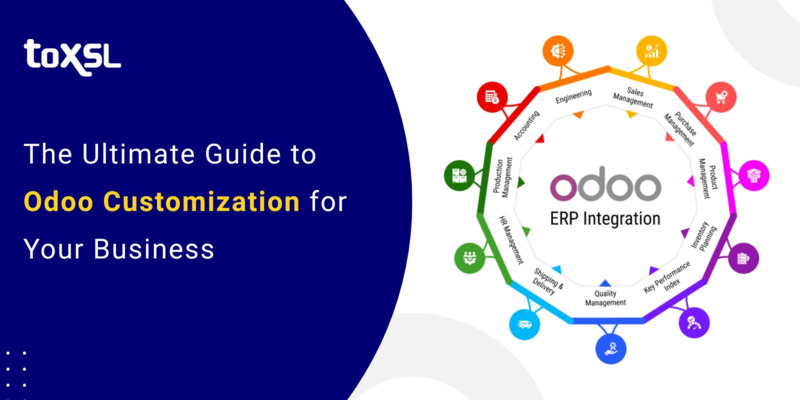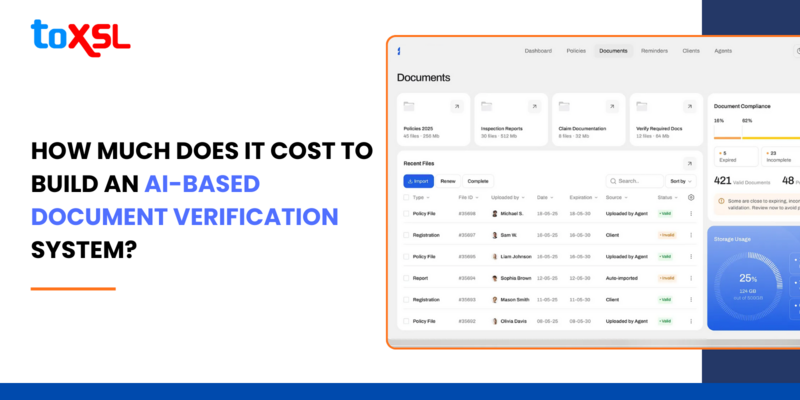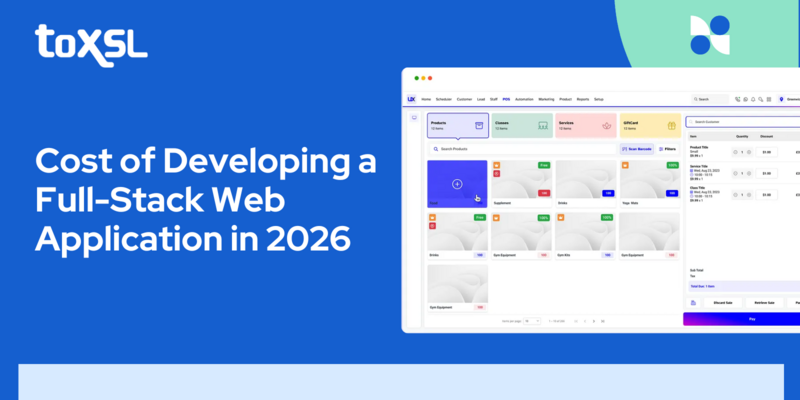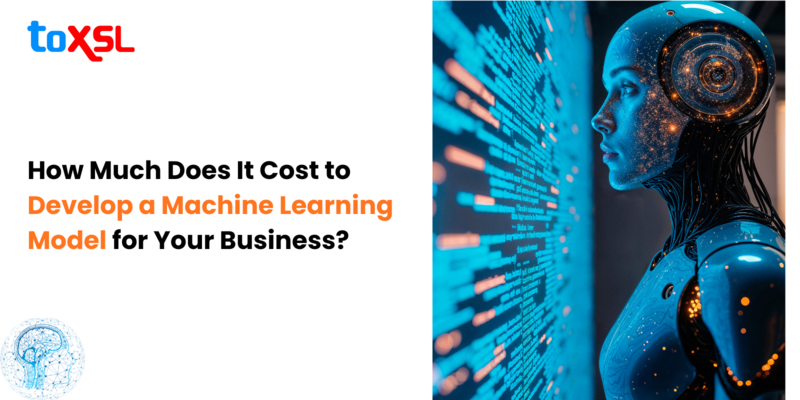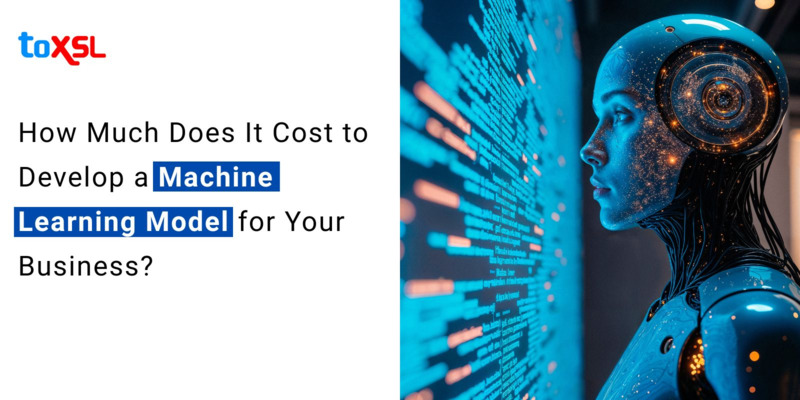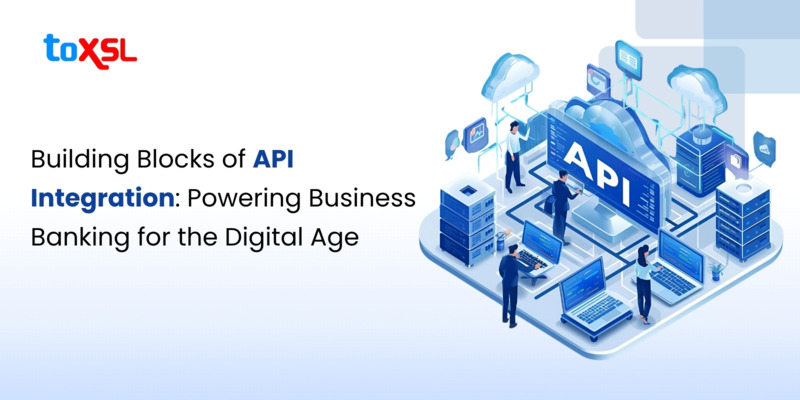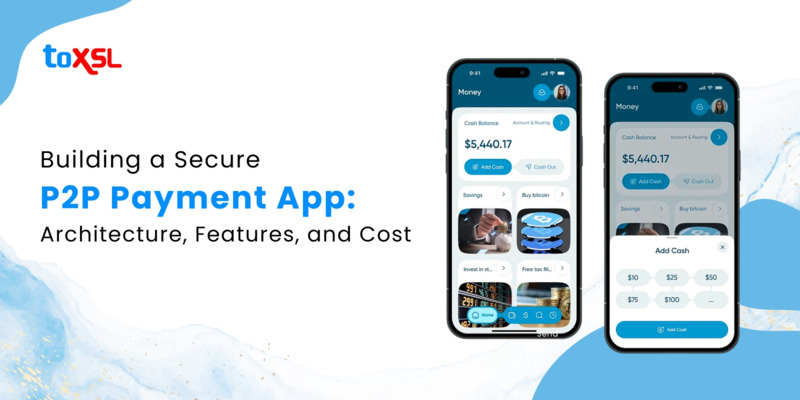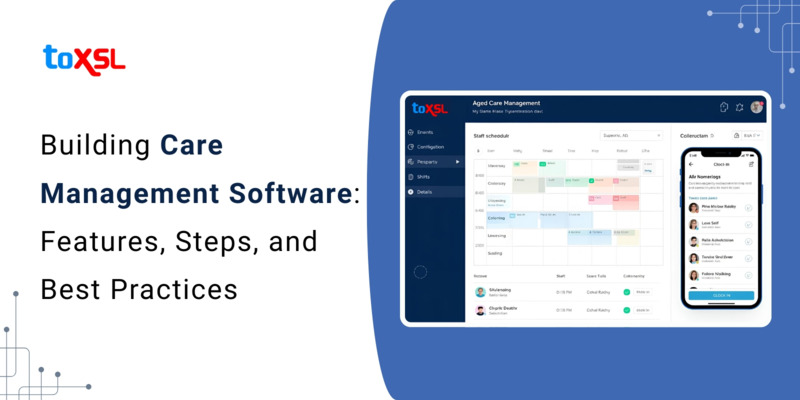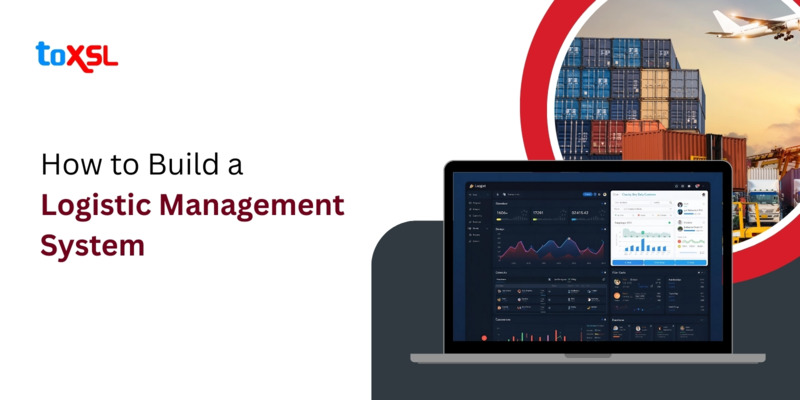- Oct 25, 2025
Share this post on:
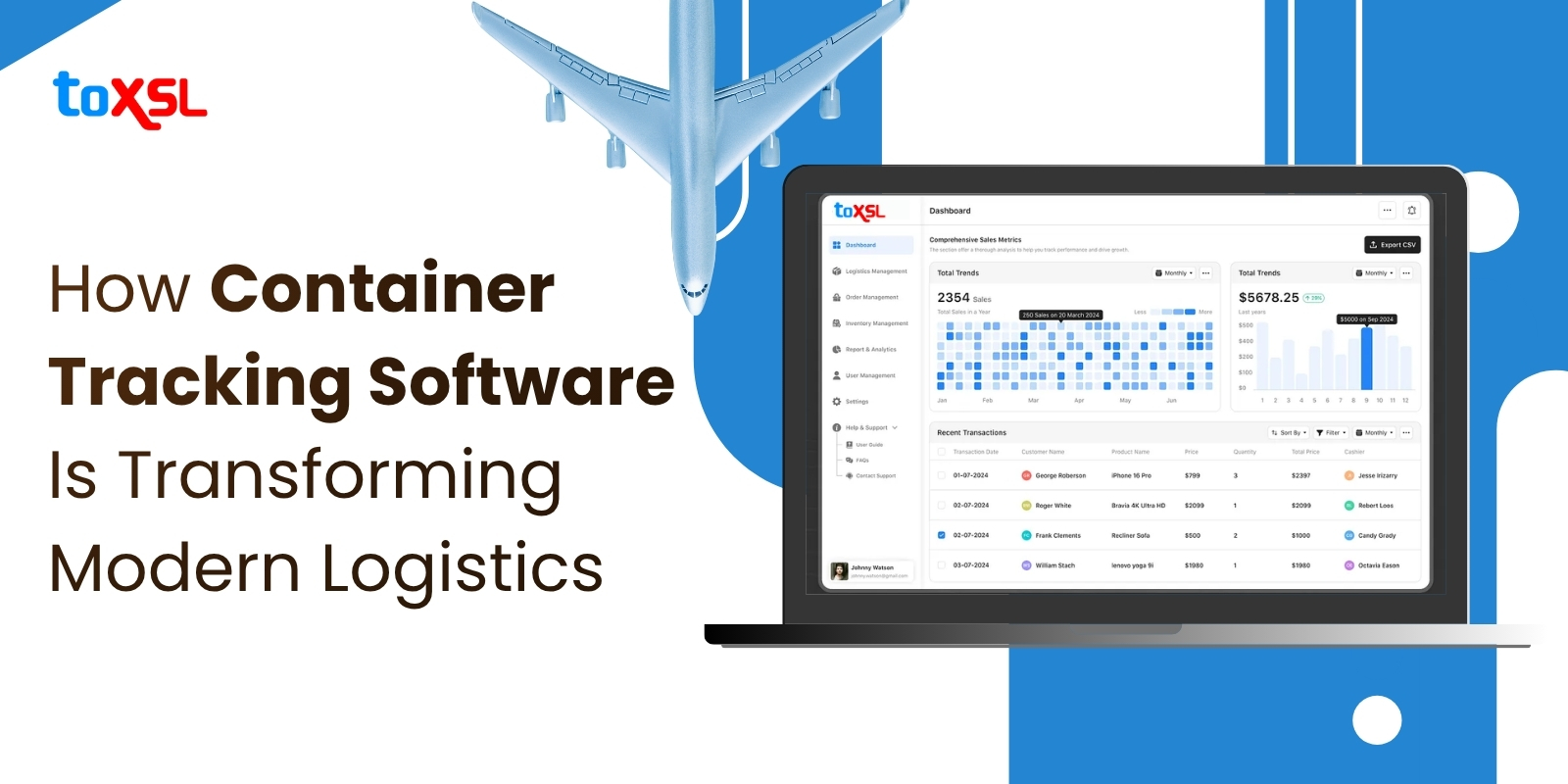
Have you ever wondered how your online order reaches your home so smoothly? What goes on behind the scenes? The logistic industry is experiencing a lot of transformation. The global container tracking market is expected to reach $3.8 billion by 2032, growing at a CAGR of 13.5%. The rapid expansion of e-commerce, increased internet connectivity, and enhanced cross-border trade have contributed to India’s maritime trade growing at twice the global average rate of 3.3%. Also, the integration of IoT and AI in container tracking has made tracking more accurate and efficient.
Why Container Tracking Matters
More than 80 % of the world’s goods are transported in shipping containers, making them the backbone of international trade. Yet for many years, container movement remained opaque: delays, mis‑routing, theft, empty‑container repositioning and loss of utilisation plagued the industry. Tracking software changes this by offering:
Real‑time location updates and status monitoring.
Cargo condition visibility (temperature, humidity, shock) for sensitive loads.
Historical and live data to analyse utilisation, detect bottlenecks and optimise assets.
By bringing transparency into the chain, container tracking software drives efficiency, reduces costs and enhances customer satisfaction.
Key Takeaways:
AI predicts arrival times, detects delays early, and improves routes.
Developing a strong backend system for handling large amounts of real-time data.
A good container platform connects easily with Transportation Management Systems (TMS).
Choosing the right container software can boost supply chain efficiency and customer trust.
How AI is Transforming Container Tracking & Logistics Industry?
AI in container tracking apps is changing how freight forwarders and shippers work by offering smarter and more efficient ways to manage cargo. Here are five easy-to-understand benefits of using AI for container tracking:
Real-Time Tracking: AI-powered container tracking gives you live updates about where your containers are, their condition, and status. This helps shippers and freight forwarders watch container movements carefully and make faster, smarter decisions using real data.
Greater Efficiency: By knowing exactly where containers are, logistics work becomes smoother, and delays can be avoided. This saves money by reducing extra costs, which happen when containers stay too long at ports or terminals.
Effective Exception Handling: The software highlights only those shipments that are way behind or ahead of schedule. This helps teams focus on the most important problems first and fix them quickly.
Better Inventory Control: Seeing the whole supply chain clearly—from where goods start to where they’re delivered—helps manage inventory better. This leads to better planning and smoother logistics.
Improved Customer Experience: Using container tracking apps, companies can give customers honest and timely updates on their shipments. This honesty builds trust and makes customers happier and more loyal.
Container Tracking Software Is Transforming Modern Logistics
Global supply chain, businesses are under constant pressure to deliver goods efficiently, transparently, and on time. Modern logistics relies heavily on technology, and container tracking software has emerged as a game-changer for companies aiming to streamline operations and improve customer satisfaction.
Aspect | Traditional Logistics | With Container Tracking Software | Key Benefits |
|---|---|---|---|
Visibility | Limited to manual updates and paperwork | Real-time tracking with GPS, IoT, and cloud-based platforms | 24/7 container visibility across sea, road, and rail |
Decision-Making | Reactive – based on outdated data | Proactive – using predictive analytics and live insights | Faster, data-driven decisions and reduced response time |
ETA Accuracy | Relies on estimates and human inputs | AI/ML algorithms predict accurate ETAs using real-time data | Better planning and reduced customer uncertainty |
Cargo Condition Monitoring | No visibility into temperature, humidity, or shocks | IoT sensors monitor environment inside containers | Protection of sensitive cargo (e.g., pharma, food) |
Exception Management | Manual issue tracking and slow escalation | Automated alerts and geofencing for early detection of anomalies | Prioritized problem-solving and reduced delays |
Operational Efficiency | High manual intervention, time-consuming tasks | Automated workflows and data syncing with TMS/WMS/ERP | Lower operational costs and improved productivity |
Customer Experience | Limited updates, delayed communication | Live updates, transparent tracking links, and notifications | Improved trust, satisfaction, and repeat business |
Asset Utilization | Containers often idle or misplaced | Track empty containers and optimize usage | Reduced demurrage, detention, and asset wastage |
Route Optimization | Static planning based on historical patterns | Dynamic routing based on weather, congestion, port delays | Reduced transit time and fuel consumption |
Security & Compliance | High risk of theft, tampering, and data gaps | Real-time alerts, geofencing, and audit trails | Improved cargo security and regulatory compliance |
Data Reporting | Spreadsheets and manual logs | Dashboard with KPIs, heatmaps, and analytics | Smarter insights for continuous improvement |
Global Coordination | Siloed systems and poor partner communication | Centralized data sharing among carriers, shippers, forwarders | Better collaboration and supply chain visibility |
Scalability | Difficult to scale due to manual processes | Cloud-based SaaS platforms enable global scalability | Faster rollout across locations and partners |
Sustainability | No tracking of carbon footprint or waste | Optimize routes and asset usage for lower emissions | Supports ESG goals and greener logistics |
How to Develop a Container Tracking Software With AI
Are you looking to develop the best container tracking software with AI? The development of container tracking software involves a systematic process that involves numerous steps to ensure the application meets business goals and deliver accurate shopping containers.
Define Objectives: The first step of developing a container tracking software is to define the purpose of the container tracking software and identify the target audience. This involves setting business goals, understanding user needs, and determining key features such as real-time location tracking, geofencing and more.
Technology Stack: Choosing the right technologies is important for developing a scalable and robust tracking system. The stack includes mapping APIs, backend technologies, databases, and mobile/web development frameworks.
Design UI/UX: A user-friendly interface is important to ease access to tracking information. Container tracking software designers design wireframes and prototypes that illustrate the layouts, navigation flow, and interactions.
GPS and Tracking Functionality: Integrate GPS technology and device sensors to enable real-time location tracking of containers. This includes background location updates to maintain tracking even when the app is not being used. With that, IoT sensor can help containers to capture environmental data such as temperature and humidity.
Incorporating Mapping: Mapping APIs into interactive maps, geocoding, route tracking, and visualization of movements. This involves showing container positions on maps and enabling features such as route history, status markers, and geofencing boundaries to trigger alerts.
Implement Alerts and Notifications: Geofencing technology sets virtual boundaries on maps to trigger notifications when containers enter or leave specific areas. Alerts can also notify about delays, route changes, or security breaches. These notifications can be pushed through emails, SMS, or in-app messages.
Develop Backend Systems: The backend is the part of the software that collects and manages all the data. It gets information from various sources like GPS devices, ports, and other companies. It keeps all this data safe in a big storage space called a database. Sometimes, smart tools help predict when a container will arrive or if there might be any problems, helping to choose the best route.
Security Measures: Keeping data safe is very important. Developers use special codes and secure ways to send data so that nobody else can see or change it without permission. They check who is allowed to use the system and make sure that all rules to protect privacy are followed.
Testing and Deployment: Software is tested before launch to identify and fix bugs, verify performance testing across device. Tests make sure the tracking works well on many devices and in different conditions. After launching, the software is watched and updated regularly to keep it working smoothly and add new features if needed.
Integration with Supply Chain Systems: The container tracking software integrates with other important business tools such as transport, enterprise, and warehouse management systems. This helps all parts of the shipping process work together smoothly and enhance visibility across the supply chain.
Analytics and Reporting Tools: Container tracking software makes reports and charts about container locations, delays, and other important details. These reports help businesses understand what is happening and make better plans to improve shipping and deliveries.
Key Features of a Container Tracking Software
Wondering what container tracking software features you should add to your container tracking software? What are the must-have features of a container tracking software?
Data Quality
You cannot make good decisions without good and correct data. The best shipping container management platforms are the ones that provide accurate information. Important decisions depend on the information given by these platforms, so accuracy is very important. The data from shipping is often complicated because it comes from many sources, which can cause differences in how often data is updated, its format, or the names used. This can cause mistakes. A platform’s own smart computer programs and good data handling help reduce these errors. When choosing a container tracking platform, it's important to check these things:
Complete Data
The platform should gather and keep all the important information about containers. This information should be recorded properly and in the same way for different shipping companies. If the data is not complete, you may lose important updates or misunderstand where the container is, which can cause expensive mistakes in shipping.
Fast Updates
The data should be updated quickly, almost in real-time. If updates come late, you might miss important actions like picking up a container from the port on time, which can lead to extra charges.
Accurate Data
The platform should use smart checks and also have people who check the data to make sure it is correct. This combination helps make sure the tracking information you see is true, reliable, and consistent.
Carrier Connectivity
Real-time visibility platforms need to have a strong system for bringing carriers on board and managing them well. They should have a strong carrier network that works both within the country and internationally. An important extra feature is the ability to handle data from non-vessel operating common carriers (NVOCCs) or freight forwarders and to automatically recognize carriers even when the data given does not clearly say who the carrier is. This makes the tracking more complete and reliable to use anywhere in the world.
Alerts and Notifications
A good container tracking platform makes sure to send event alerts and notifications to keep everyone updated about important steps and changes in the container’s journey. It’s important to have notifications that are focused on exceptions, meaning alerts only for important issues, and that can be customized to fit your needs. Finding the right balance is key: too many alerts can be overwhelming, while too few might leave gaps in information. So, it’s important to let your team decide what kind of alerts they want, how often, and in what format. These alerts include important events like:
When a container is loaded or unloaded
Customs clearance updates
When a container moves to a different route
Notices before the container arrives at a port
Unexpected delays or risks
Alerts about waiting times or problems with the container
Reports and Data Insights
Good container tracking software uses the latest technology, like artificial intelligence (AI) and machine learning. These tools help turn a lot of data into useful information that helps users make important decisions. This can improve how well the supply chain works and increase profits.
Predictive ETAs: This means the software can predict the Estimated Time of Arrival of containers. This helps you plan when to pick up containers, clear customs, and schedule production.
Port Congestion Alerts: You get timely information about busy ports and delays. This helps you plan the best trade routes to avoid problems.
Average Transit Times: The software tells you how long shipments usually take and factors that affect the time. This helps plan lead times better.
Carrier Analytics: You get reports about the performance of shipping companies. This lets you choose the best carriers for your routes and negotiate better contracts.
Seamless Integration
A container tracking platform that works well should be able to connect easily with different systems and tools used in logistics. It should smoothly link with Transportation Management Systems (TMS), Warehouse Management Systems (WMS), Enterprise Resource Planning (ERP) systems, digital forwarding solutions, and other related applications. This integration allows for quick sharing of data, making processes smoother and helping everyone involved work better together. When a container tracking system can connect with many different platforms, it becomes a central point that gathers data from all sources. This helps businesses make fast, accurate decisions based on real-time information. Good system integration reduces complications, saves time, and boosts overall performance.
How Much Does it Cost to Build Container Tracking Software?
The cost to build tracking container software depends on various factors like features, complexity, platforms, and the development team you hire. The freight forwarding software development can range from simple tools with basic features to highly sophisticated systems with advanced analytics, AI, and IoT integration.
Basic container tracking software includes essential features such as container location tracking and simple reports. Building this usually costs between $5,000 and $10,000 and takes 1 to 3 months.
Moderate systems with more features like real-time updates, barcode scanning, and API integration can cost from $10,000 to $20,000, with a development timeline of 3 to 6 months.
Advanced systems that include predictive analytics, AI-powered insights, and multi-platform support can cost from $20,000 to $50,000 or more, and typically take 6 to 9+ months to develop.
Type of Software | Features | Time to Develop | Estimated Cost (USD) |
|---|---|---|---|
Basic Container Tracking | Location tracking, basic reporting, inventory, simple alerts | 1-3 months | $5,000 - $10,000 |
Moderate Container Tracking | Real-time updates, barcode recognition, API integrations | 3-6 months | $10,000 - $20,000 |
Advanced Container Tracking | Predictive analytics, AI, IoT, multi-platform support | 6-9+ months | $20,000 - $50,000+ |
The Technology Stack Behind the Transformation
To understand how container tracking software works, let’s outline the underlying technologies:
IoT & Sensor Networks: Containers are fitted with sensors that monitor location and conditions (e.g., temperature, humidity, shock).
Connectivity (5G, LPWAN, Satellite): Real‑time data transmission uses high‑speed and wide‑area communication networks.
Big Data & Analytics Engines: Large volumes of data from multiple sources are aggregated, cleaned and analysed to derive insights.
Cloud Platforms & SaaS Deployment: Many solutions are offered via SaaS, enabling rapid rollout, scalability and lower upfront cost.
Integration APIs & Middleware: To connect with TMS/WMS/ERP systems, data interchange and APIs are critical.
Security Technologies (Blockchain, Encryption, Authentication): To ensure data integrity, provenance and privacy throughout the chain.
The Future of Container Tracking in AI
The future of container tracking lies in AI-powered solutions that offer real-time visibility, predictive analytics, and smart automation. AI can accurately forecast Estimated Time of Arrival (ETA), detect delays early, and optimize shipping routes based on real-time conditions. As global trade becomes more complex, AI enables logistics companies to make data-driven decisions, reduce costs, and improve customer satisfaction. Integration with IoT devices will further enhance visibility by providing real-time container conditions such as temperature, humidity, and security breaches. Machine learning will continuously improve accuracy by analyzing vast amounts of historical and real-time data. With AI, container tracking is shifting from simple location tracking to intelligent supply chain management, helping businesses proactively manage risks, reduce downtime, and boost efficiency. In the coming years, AI will be essential for building resilient, transparent, and competitive logistics ecosystems.
Conclusion
Real-time container tracking is more than just knowing where your shipments are. It helps you understand how well your logistics network works. When businesses have full tracking data, they can see problems before they happen and plan better instead of just reacting. By studying container movements, check which carriers are reliable, and spot early signs of delays. This information helps teams in buying, inventory, and transport to make smarter decisions.
So, if you are a logistics business and looking to invest in the best container tracking software, look no further than ToXSL Technologies. We have helped numerous businesses globally with our top-class Container Tracking Software. Feel free to contact us.
Frequently Asked Questions
1. What essential features should container tracking software have?
Container tracking software should have real-time location tracking so you always know where your containers are. It should give estimated times of arrival (ETA) to help plan pickups and deliveries. Also, alerts and notifications are necessary to inform you about important events like delays or customs clearance.
2. How does AI improve container tracking?
AI improves container tracking by predicting exactly when containers will arrive, helping you plan better. It can detect delays early and send alerts so you can act quickly. AI also analyzes large amounts of data to find patterns or possible problems, giving you smart insights that help make your supply chain run more efficiently.
3. Can the tracking software connect with my existing logistics platforms?
Yes, most good container tracking software connects easily with existing logistics tools such as TMS, WMS, and ERP systems. This integration allows all your shipping data to flow smoothly between systems, giving you a complete picture of your container movements and helping your teams work better together.
4. What factors influence the cost of developing container tracking software?
The cost depends on numerous factors such as how many features you want, whether the software needs to connect to other systems, if you want AI and machine learning capabilities, and how many platforms the software should support (web, mobile, etc.). It also depends on where the developers are located, as costs vary worldwide.
5. How important is data accuracy?
Data accuracy is very important because all decisions about shipments depend on correct information. Inaccurate data can lead to missed deliveries, delays, and increased costs. The best software uses smart AI checks and human experts to make sure the tracking data is trustworthy and complete.
6. Are there pre-built container tracking solutions?
Yes, there are many ready-made solutions available, like FourKites, Project44, GoComet, and Portcast. These platforms offer powerful tracking features out of the box and can often be customized to fit your business needs. Using these saves you time and effort compared to building software from scratch.
7. What trends will shape container tracking’s future?
The future of container tracking will see more AI and machine learning for better predictions and insights. IoT sensors inside containers will provide real-time condition monitoring. Blockchain technology will add security and transparency. Full integration across the entire supply chain and more automation will make tracking faster, more accurate, and easier to manage.


